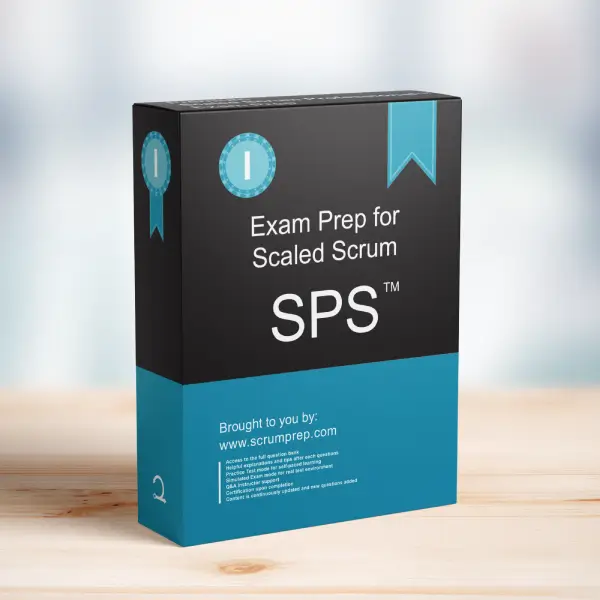Structuring Product Ownership for Multiple Products in Scrum
In Scrum, structuring Product Ownership effectively is crucial for managing multiple products and ensuring accountability and value delivery.
Exam Question
A company that has five products is using Scrum for product delivery. Which statements represent the best option for how Product Ownership might be structured?
(choose the best two answers)
A. One Product Owner responsible for all five products. This Product Owner may delegate work as needed, but the Product Owner remains accountable for the value delivered.
B. Assign as many Product Owners as needed to communicate expectations and requirements to the Scrum Team.
C. One primary Product Owner and one Product Owner for each product. The primary Product Owner delegates all accountability for delivering value to the Product Owners for each product.
D. One Product Owner responsible for each product. Each of these Product Owners may delegate work as needed, but they remain accountable for the value delivered by their product.
Correct Answers
A. One Product Owner responsible for all five products. This Product Owner may delegate work as needed, but the Product Owner remains accountable for the value delivered.
D. One Product Owner responsible for each product. Each of these Product Owners may delegate work as needed, but they remain accountable for the value delivered by their product.
Explanation
Correct Answers
A. One Product Owner responsible for all five products. This Product Owner may delegate work as needed, but the Product Owner remains accountable for the value delivered:
This structure ensures that a single Product Owner has a holistic view of all products and can make strategic decisions across the product portfolio. Although the Product Owner may delegate work, they maintain overall accountability for the value delivered by all five products.
D. One Product Owner responsible for each product. Each of these Product Owners may delegate work as needed, but they remain accountable for the value delivered by their product:
This structure allows for dedicated focus and accountability for each product. Each Product Owner is responsible for their product’s value delivery, which can lead to more effective prioritization and stakeholder management.
Why the Other Options Are Less Effective
B. Assign as many Product Owners as needed to communicate expectations and requirements to the Scrum Team:
This option lacks clarity and accountability. Assigning multiple Product Owners without clear responsibility can lead to confusion and misaligned priorities.
C. One primary Product Owner and one Product Owner for each product. The primary Product Owner delegates all accountability for delivering value to the Product Owners for each product:
Delegating all accountability to other Product Owners can dilute the primary Product Owner’s role and responsibility. It is crucial to maintain clear accountability to ensure effective decision-making and value delivery.
Benefits of Effective Product Ownership Structures
- Clarity in Accountability: Ensures that there is a clear understanding of who is responsible for delivering value.
- Effective Prioritization: Allows for focused attention on each product’s priorities and needs.
- Holistic View: A single Product Owner for multiple products can ensure alignment with the overall business strategy.
Relevance to the SPS Exam
Understanding how to structure Product Ownership effectively is crucial for the SPS exam. This knowledge demonstrates the ability to manage multiple products efficiently in a Scrum environment, ensuring clear accountability and value delivery.
Key Takeaways
- A single Product Owner for multiple products can provide a strategic view and alignment across products.
- Dedicated Product Owners for each product ensure focused attention and accountability for value delivery.
- Clear accountability structures prevent confusion and misaligned priorities.
Conclusion
Effective Product Ownership structures are essential for managing multiple products in Scrum. By ensuring clear accountability and strategic alignment, organizations can deliver value more efficiently. For more information on preparing for the SPS exam, visit our Scaled Professional Scrum SPS™ Exam Prep.



